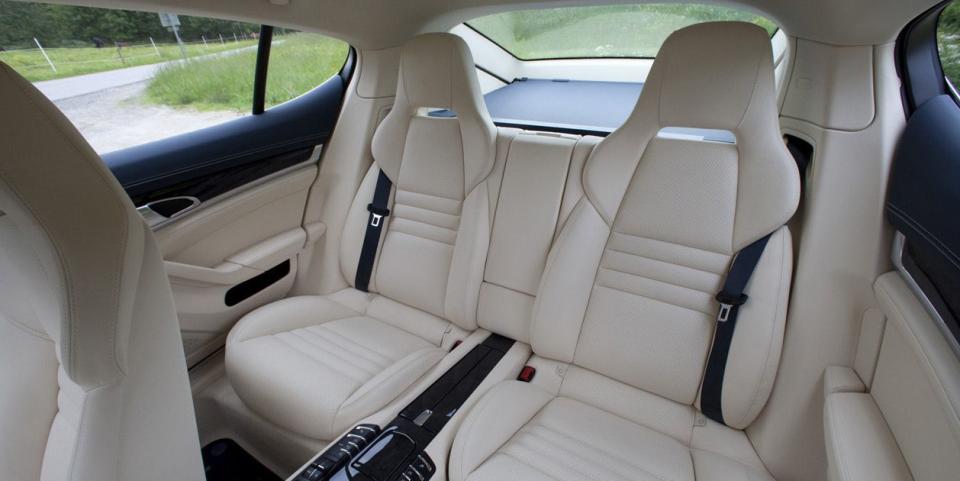Why Rear Passengers May Be Hurt More in Crashes, and What IIHS Wants Carmakers to Do about It

The Insurance Institute for Highway Safety (IIHS) wants automakers to improve safety for rear passengers in frontal collisions.
No U.S. standard or test exists to evaluate rear passenger safety in a frontal head-on crash.
Current safety tech, such as inflatable shoulder belts, is proven to reduce injuries.
Automakers will be subject to a new crash test that, for the first time among standardized tests in the United States, will evaluate how well their cars protect passengers in the back seat during a frontal accident. The IIHS said it is developing the test after reviewing 117 accidents in the U.S. during which many buckled-up rear passengers were more injured-or outright killed-versus front passengers in frontal collisions.
Traditionally, the driving public has considered the back seat as the safest location in a frontal crash since it's the furthest from impact and away from the dashboard, console, and other hard contact areas that can collide with a human body. But in crashes involving 2000 and newer vehicles that were no more than 10 model years old, rear passengers were likeliest to be hurt or killed from chest injuries, not by other parts of the vehicle or from a collapsing passenger space. The main culprit, ironically, may be the seatbelt.
"The fact that our sample had mostly survivable crashes tells us that we need to do a better job restraining adults and older children in the back seat," IIHS engineer Jessica Jermakian said in a statement.
The problem, according to the IIHS analysis of the crashes, is that shoulder belts can exhibit excessive force on the passenger's chest. This is because most automakers have found it unnecessary to fit pretensioners and force limiters to the rear seatbelts the way they do for the front seatbelts. Pretensioners use an explosive charge within the buckle connector or belt reel to cinch the seatbelt extra tight during the first milliseconds of a crash, ensuring limited body motion. As the crash energy continues, the force limiter activates to allow some of the belt to retract, thereby loosening the belt's tension on the chest and allowing the frontal airbag to provide the final cushioning.

The IIHS report said that forward-facing airbags could allow automakers to reduce the belt's tension (and hence chest injuries) along with reducing head injuries, which were the second most common injury. No car uses such airbags for the rear passengers. A few automakers, namely Ford and Mercedes-Benz, have introduced inflatable shoulder belts that provide more chest protection during a frontal collision. Such belts, just like rear thorax side airbags, are optional and not widely available. But the results mirror what we discovered during a 2016 visit to an Austrian research lab responsible for modeling the actual human body before and during a crash. Safety systems like seatbelts and airbags that we consider infallible can actually cause unintended harm. The challenge for engineers is how to make noticeable improvements without sacrificing what makes these systems so effective in the first place.
The Euro NCAP is the only major testing authority that evaluates how a rear passenger fares in a frontal collision. Both the IIHS and NHTSA use a rear passenger dummy but only in side-impact tests. When IIHS completes the new test standard, the insurance-funded organization said it hopes to "prompt automakers to figure out what combination of technologies works best."
('You Might Also Like',)

 Yahoo Finance
Yahoo Finance 